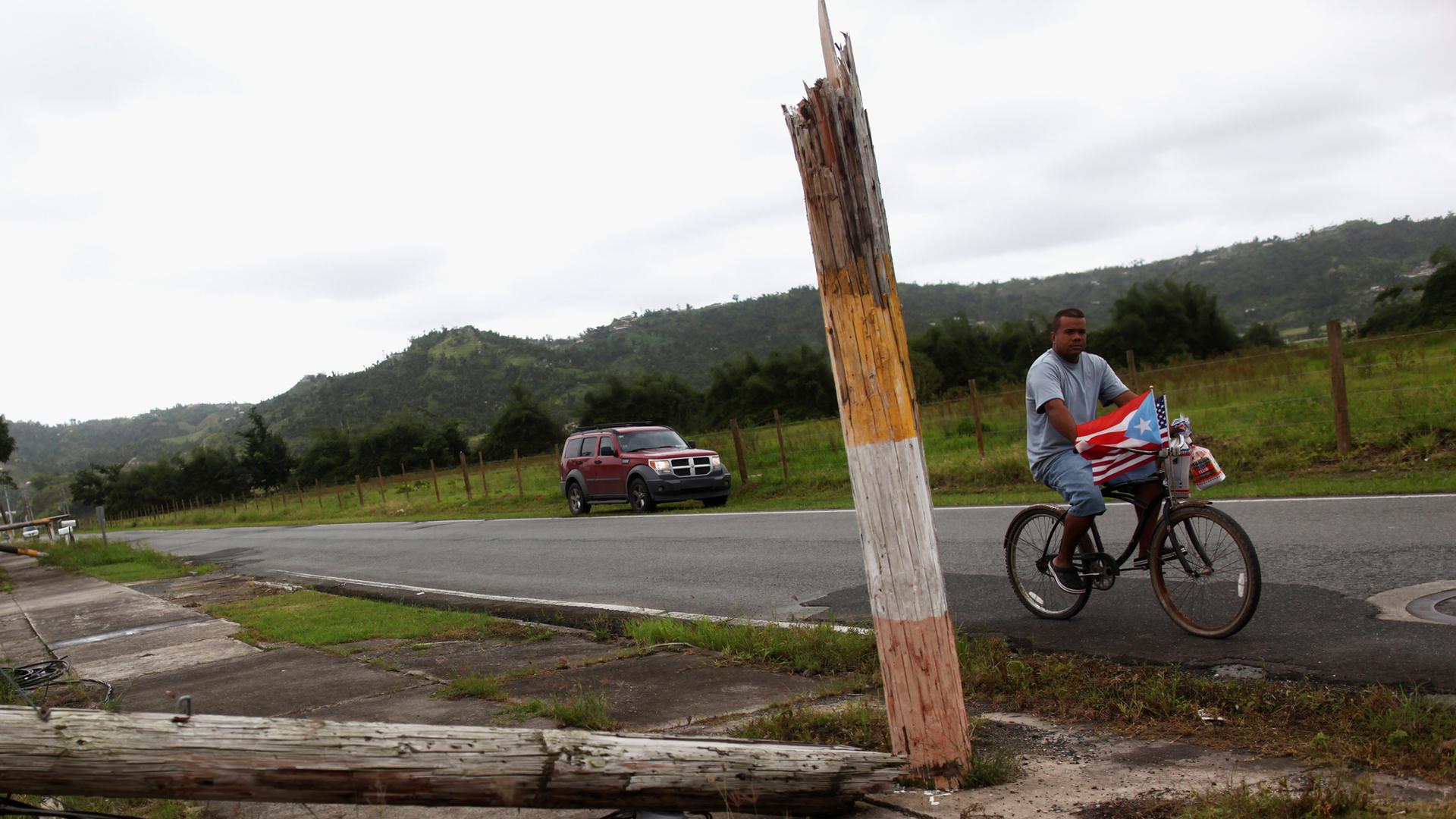Six months after Maria, Puerto Rico is burdened with challenges
A man rides a bicycle past a collapsed utility pole after Hurricane Maria hit the island in September 2017.
As Puerto Rico approaches the six-month mark since Hurricane Maria devastated the island, many want to know why thousands of residents are still without power.
The storm is considered the worst natural disaster on record for the island of 3.4 million people. Officials list the death toll at 64 but the number of people killed could be over 1,000. The widespread destruction combined with an extremely complicated power system has left thousands in the dark.
“The amount of destruction that the storm left behind is unprecedented,” says José E. Sánchez, the deputy director of research and development for US Army Corps of Engineers and the former director of the Corps’ Puerto Rico Power Grid Restoration Program following Hurricane Maria.
“At the same time, you have a weak system. Infrastructure on the island for power has been in disrepair for many years.”
Sánchez says, by comparison, the average age of a power plant in the US, and elsewhere around world, is about 15 years. The average age in Puerto Rico is 44 years.
Puerto Rico has the most energized system per square mile in the world. According to Sánchez, there are 40,000 miles of energy distribution lines along with thousands of polls and towers. That, coupled with an extremely densely populated island, results in a challenging restoration process.
On top of that, the island’s only power utility company, the Puerto Rico Electric Power Authority (PREPA), is bankrupt. Puerto Rico’s governor is now planning to sell PREPA to the private sector.
“The Puerto Rico Electric Power Authority has become a heavy burden on our people, who are now hostage to its poor service and high cost,” Governor Ricardo Rossello said in a statement. “What we know today as the Puerto Rico Electric Power Authority does not work and cannot continue to operate like this.”
PREPA’s problems are just one of many crises. Puerto Rico has experienced years of economic turmoil which only exacerbates power recovery on the island.
“It’s a major impact,” Sánchez says. “The condition of the infrastructure is the No. 1 example of its condition. Without having the funds to maintain the system, of course you have a dilapidated system. The system is very fragile. On top of that, there’s an inability for them to acquire materials, to acquire additional personnel, to enter into contracts and all these things were a factor and just compounded the situation in Puerto Rico.”
Sánchez says the Army Corps of Engineers is projecting that the island’s power will be fully restored by the end of May. All of these challenges and more are making the recovery effort in Puerto Rico that much more difficult.
On Friday, March 9, Sánchez will be a part of a panel discussion on Puerto Rico post-Hurricane Maria. The World's Carol Hills will moderate the discussion at Harvard’s T.H. Chan School of Public Health from 12 p.m. to 1 p.m. ET.
Sánchez will be joined by Kellie Bentz, head of global disaster response and relief at Airbnb; Brad Kieserman, Red Cross vice president of disaster operations and logistics; Daniel Ramos, health programs partnerships and strategies specialist at Primary Health Association of Puerto Rico; and Richard Serino, former deputy administrator at FEMA and distinguished visiting fellow at Harvard.
Join us for a Facebook Live pre-event with José Sánchez at 10:30 a.m. ET on Friday followed by the forum, which will be streamed live right here at PRI.org.
We want to hear from you. What questions do you have about the recovery effort in Puerto Rico? Let us know on the events Facebook page.
